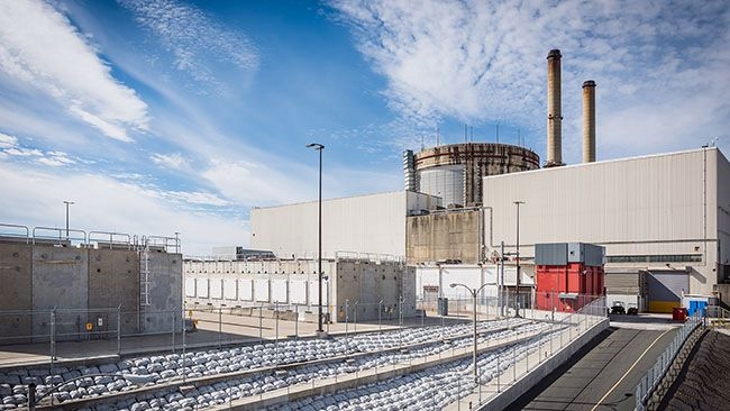Orano Decommissioning Services has implemented an innovative method for dismantling of commercial and research nuclear reactors at the Crystal River unit 3 accelerated decommissioning project in Florida. The patented Optimized Segmentation process aims to reduce the volume of waste for disposal and the amount of segmentation work on the reactor structures.

Crystal River (Image: Duke Energy)
The new process cuts up and removes everything inside the thick-walled, steel alloy reactor vessel (RV) and then precisely repacks the low-level radioactive waste into the RV before cutting the massive component, minus the reactor vessel closure head, and its shielded contents into three large pieces sized for transportation and disposal.
The Optimized Segmentation process first segments, extracts and separates underwater all of the reactor internals into two categories: Greater-than-Class C waste to be handled, packaged, and stored using conventional methods; and highly-contaminated and activated internal structures.
The now-empty reactor vessel is repacked underwater using a precisely engineered placement of the highly-contaminated and activated waste based on each piece's characterisation. This concentrates the highest waste category components in the middle of the vertical vessel, while less activated waste is placed in the bottom and top sections. The reactor vessel and repackaged internals are then drained and immobilised in grout specifically prepared to achieve the ALARA (as-low-as-reasonably-achievable) goal and to immobilise the reactor internals inside the vessel.
The solid, grout-filled reactor vessel packed with waste is subsequently segmented into three large sections, consistent with the optimised waste distribution. Each section is packaged and shipped individually in a tailor-made container designed to safely transport and dispose of the waste in compliance with relevant regulations, and the disposal site's waste acceptance criteria.

The patented Optimized Segmentation process (Image: Orano)
Of the three segmented reactor vessel sections, only the middle section requires a Nuclear Regulatory Commission (NRC) approved Type B package for shipment. Orano said the design of this Type B package was completed in August 2021, and the licence application is being reviewed by the NRC.
"Our innovative Optimized Segmentation process reduces the normal 80+ low-level waste shipments of reactor vessel and internals components to just three transports," said Orano Decommissioning Services President Geoff Wilde, "which also significantly reduces the potential impact to the community while enhancing overall safety, schedule, and cost performance".
Crystal River 3 began commercial operation in 1977, but the plant never returned to service after complications concerning the reactor's containment structure following steam generator replacement work in 2009. All the plant's used fuel has been transferred to an on-site Independent Spent Fuel Storage Installation, an operation that was completed in January 2018.
On 1 October 2020, Accelerated Decommissioning Partners - a joint venture between NorthStar Group Services and Orano USA - and Duke Energy completed a transaction to begin decontamination and dismantlement of Crystal River 3 in 2020 instead of 2067 - nearly 50 years sooner than originally planned.
Reactor dismantling operations started at the reactor in 2021. Components of the reactor cooling system (steam generators, main coolant pumps and motors, the pressuriser, and large bore piping) have been removed from the containment building and shipped off-site for disposal. Segmentation of the reactor internals started and were completed in 2022 and removal of all reactor structures from the containment building will be completed in 2023.